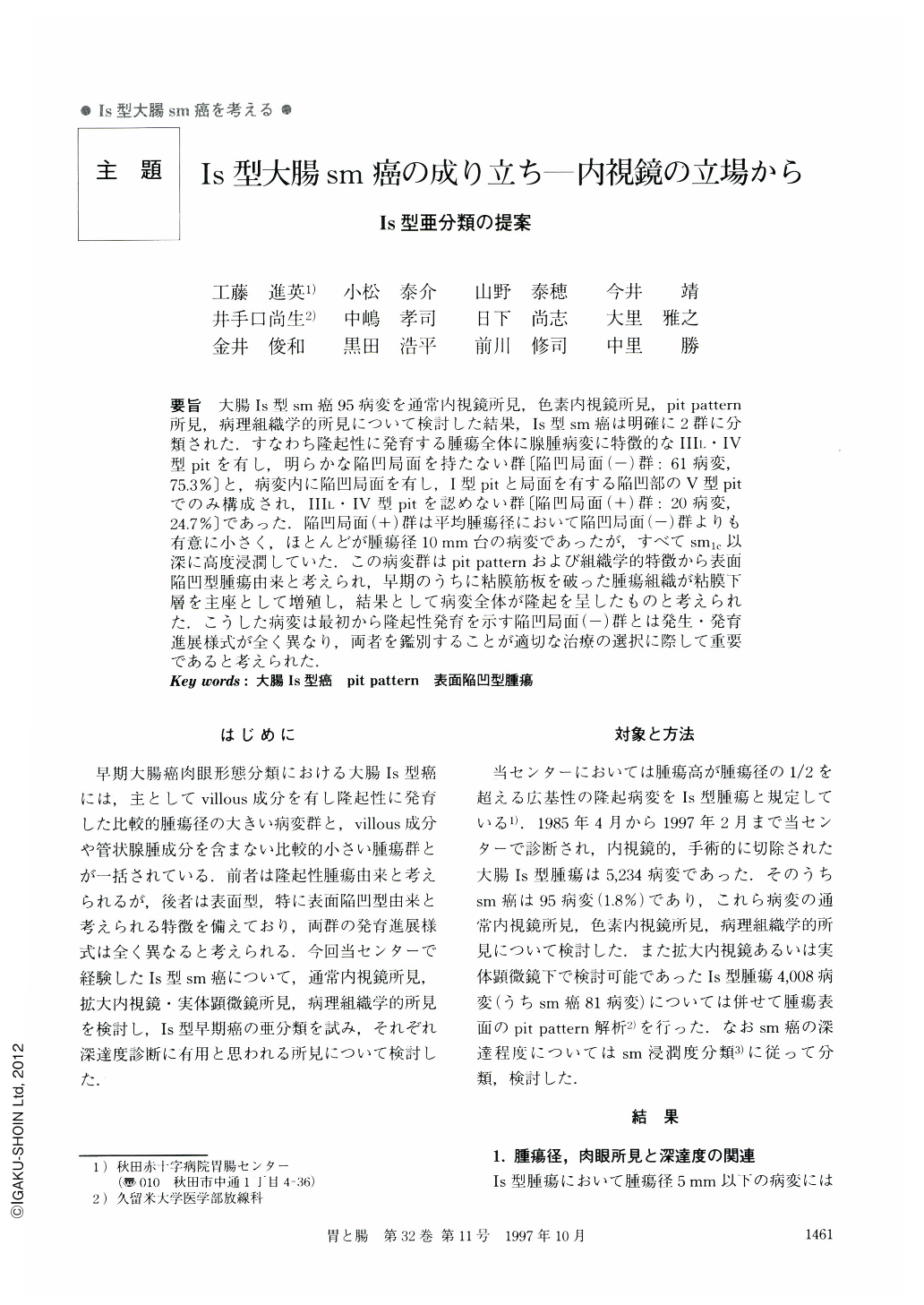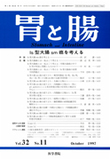Japanese
English
- 有料閲覧
- Abstract 文献概要
- 1ページ目 Look Inside
- サイト内被引用 Cited by
要旨 大腸Is型sm癌95病変を通常内視鏡所見,色素内視鏡所見,pit pattern所見,病理組織学的所見について検討した結果,Is型sm癌は明確に2群に分類された.すなわち隆起性に発育する腫瘍全体に腺腫病変に特徴的なⅢL・Ⅳ型pitを有し,明らかな陥凹局面を持たない群〔陥凹局面(-)群:61病変,75.3%〕と,病変内に陥凹局面を有し,I型pitと局面を有する陥凹部のV型pitでのみ構成され,ⅢL・Ⅳ型pitを認めない群〔陥凹局面(+)群:20病変,24.7%〕であった.陥凹局面(+)群は平均腫瘍径において陥凹局面(-)群よりも有意に小さく,ほとんどが腫瘍径10mm台の病変であったが,すべてsm1.以深に高度浸潤していた.この病変群はpit patternおよび組織学的特徴から表面陥凹型腫瘍由来と考えられ,早期のうちに粘膜筋板を破った腫瘍組織が粘膜下層を主座として増殖し,結果として病変全体が隆起を呈したものと考えられた.こうした病変は最初から隆起性発育を示す陥凹局面(-)群とは発生・発育進展様式が全く異なり,両者を鑑別することが適切な治療の選択に際して重要であると考えられた.
Using endoscopic findings and hisologic features, we analyzed 95 protruded (type Is) cancers invading the submucosa. We also analysis the pit pattern in 81 of these lesions. According to endoscopic observasion and pit pattern, they were classified into two types: the depressed area (-) group (61 lesions, 75.2%) and the depressed area (+) group (20 lesions, 24.7%). The depressed area (+) group manifested type ⅢL and type Ⅳ pit pattern, but these manifestations were not present in the depressed area (+) group. The size of tumors which have a depressed area was significantly smaller than that of other tumors, but all of them in this study had invaded the submucosa to a massive degree. It was suggested that the tumors of the depressed (+) group were derived from depressed tumors because of their similarity in histologic features. They had also invaded the submucosa rapidly in their early phase of growth and were recognized as protruded tumors. For the sake of deciding the indication for endoscopic resection, it is obvious that it is significant to distinguish these two groups from each other.

Copyright © 1997, Igaku-Shoin Ltd. All rights reserved.


